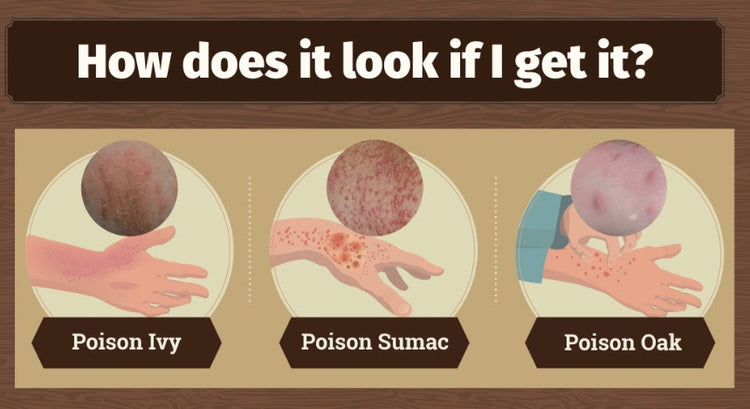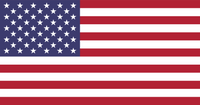So you've come in contact with poison ivy?
You can't think straight and go about your day normally because all you can think about is scratching the itch caused by the poison ivy.
When you touch poison ivy, its effects can ruin your daily routine and way of life for days. It’s not uncommon to lose sleep and feel uncomfortable and agitated for days because of this seemingly innocent plant.
However, there’s still plenty you can do to alleviate the itching and potential rashes that may develop in the next few days — as long as you know what to do after exposure.
This article will help you learn how to identify poison ivy and the steps you can use to rid yourself of the itching once and for all.
How to Recognize Poison Ivy
One of the most common reasons people come into contact with poison ivy is failing to recognize it. Here’s what you need to look for:
- A plant growing with a clump of three leaves (not five)
- Leaves are green, red, or even slightly yellow
- Leaves may also be rounded off or pointy
- They grow in an alternating pattern on the stem (which means they’re not directly across from each other).
As you can see, there’s a wide variety of distinguishing features, and a few other plants like the box elder, Boston ivy, and Virginia creeper are often mistaken for this woody weed. Expect to develop a poison ivy rash when coming into contact with any part of this plant (leaves, flowers, vine, roots).
However, some plants may not directly resemble poison ivy — but they’re just as unpleasant. These species include the poison oak, which is less common than poison ivy and grows in sandy areas as a shrub. Another popular variety is poison sumac. It grows in wet areas as a small tree and has oblong, tapered leaves wavy and smooth-edged.

Source: My Southern Health
In an ideal situation, you’d be able to go around your property and identify individual plants. However, you don’t have that luxury when hiking on trails or taking a walk in wooded areas. That’s why it’s so important to be prepared to take action if you happen to touch poison ivy.
Three Steps to Take When You Touch Poison Ivy
Coming into contact with poison ivy is never pleasant. Even your best efforts at recognizing this plant may still accidentally put you in contact with a couple of its leaves. Fortunately, there are steps you can take to relieve the discomfort quickly.
Step #1: Clean the Area of Your Skin With Soap and Water
The rash is caused by the plant oil soaked in your skin, also referred to as urushiol oil. This type of oil is also present in the poisonous plants mentioned above.
You may also develop a rash if you touch something or someone that has also come in contact with poison ivy like your pet’s fur, gardening tools, camping gear, and sports equipment.
The severity of the rash depends on how much poison ivy oil spreads on your skin. Additionally, your rash may look different based on which plant urushiol oil you touch.
For example, poison sumac rashes are dense and spot-like. Poison oak rashes are more spread out. Poison ivy rashes, however, are more uniform and spread across the skin in broad strokes.

Source: Bur Oak Land Trust
Before you develop a visible rash, or once the rash spreads, wash the infected area immediately with dishwashing soap (since soap breaks up and eliminates oil). Rinse it off with cool water and apply rubbing alcohol to get rid of the oil thoroughly.
In most cases, it's better to take a bath to clean yourself and get rid of the oil that may have traveled to other parts of your body through touch contact.
Pro tip: When cleaning yourself, be sure to get the area under your fingernails. This spot is often overlooked, but traces of urushiol oil can sit in the crevices, further triggering rashes across your own body and that of others.
Since people can contract traces of the urushiol oil from any contaminated surfaces or fabrics, washing up after contact is quite effective because you’ll also stop spreading plant oils from person to person.
However, our skin will remain itchy because the reaction from the toxins within urushiol lingers on, causing discomfort and triggering those breakouts across your skin.
Until the swelling and itchiness subside, you’ll need to use a wet, cool compress to soothe the affected area. Also, try and stop yourself each time you feel the urge to scratch the affected areas. Constant scratching opens your skin up to infection and more complications.
Step #2: Use Over-the-Counter Medicines
Over-the-counter hydrocortisone creams can help stop or relieve itching and redness caused by contact with poison ivy.
Apply the cream to all of the affected areas at least two times a day for five days in a row. It’s also essential to cover any open wounds that have come into contact with poison ivy, poison oak, and poison sumac.
Even after applying the cream, you may still feel discomfort and itch from the poison ivy, oak, or sumac rash. In this case, opt for calamine lotion, zinc acetate, or zinc carbonate on top of the hydrocortisone cream.
Step #3: Prevent a Poison Ivy Rash At the Source
Once you've treated yourself, it's time to take care of your surroundings to prevent other people from touching the oil of the poison ivy plant.
Below are ways you can do this:
- Eliminate the plants — Look around your yard for poison ivy, poison oak, and poison sumac and get rid of them. Wear gloves before doing so to avoid developing any rashes because of contact.
- Clean your garden tools — If you find poison ivy in your gardens, there's a good chance your garden tools have some urushiol oil sitting on them. In this case, clean the tools with soap and water. Make sure you wear rubber gloves while doing this.
- Bath your pet — You may have touched your pet before finding out you came into contact with poison ivy. If so, give your pet a thorough bath so they won't develop rashes.
- Wash your clothes — Take off what you’re wearing when you first touch the poison ivy plant, as it’s only too easy for the urushiol oil to transfer to your clothes. Clean them in a washing machine separate from your other clothes to reduce contamination.
- Wear protective clothing — Long sleeves and pants should help keep your exposure to poison ivy minimal and non-threatening. This is especially crucial when you’re going to wooded areas where you may not know the natural foliage too well.
What If Things Don't Get Better?
You should see improvement in your skin after two to three weeks of constant care and treatment. However, there's a chance that the rash won't go away even after at-home treatment.
Worse still, you could manifest other severe symptoms such as:
- Rash turning into blisters with pus
- Fever
- Difficulty breathing at any point (this usually happens if you inhale the smoke of burning poison ivy, poison oak, and poison sumac)
- Rash spreads to sensitive parts of your body, such as eyes, genital areas, and others.
If you're experiencing any of the above, consult your doctor or healthcare provider for proper medical treatment.
Conclusion
Thankfully, poison ivy is more of a nuisance than toxic. But, let’s face it: no one needs the hassle of constant itching or having to wash all your clothing.
While the rash from the urushiol is non-lethal, you'll still have to fight the urge to itch your skin and prevent potential infections.
Cleaning the area and treating it with OTC medications should help to soothe the itching and control the rash. Experiencing more severe or persistent symptoms than inflamed skin means you need to contact your doctor immediately for medical assistance.
If you spend most of your time outdoors, touching poison ivy and dealing with its aftereffects is just one of the situations that could occur. If you’re ready to face the elements and work your way to becoming a master outdoorsman, Self Reliance Outfitters is here to help. With a variety of bushcraft and survival gear, as well as survival training and guides, you can make the most out of your outdoor experience with Self Reliance Outfitters on your side.




